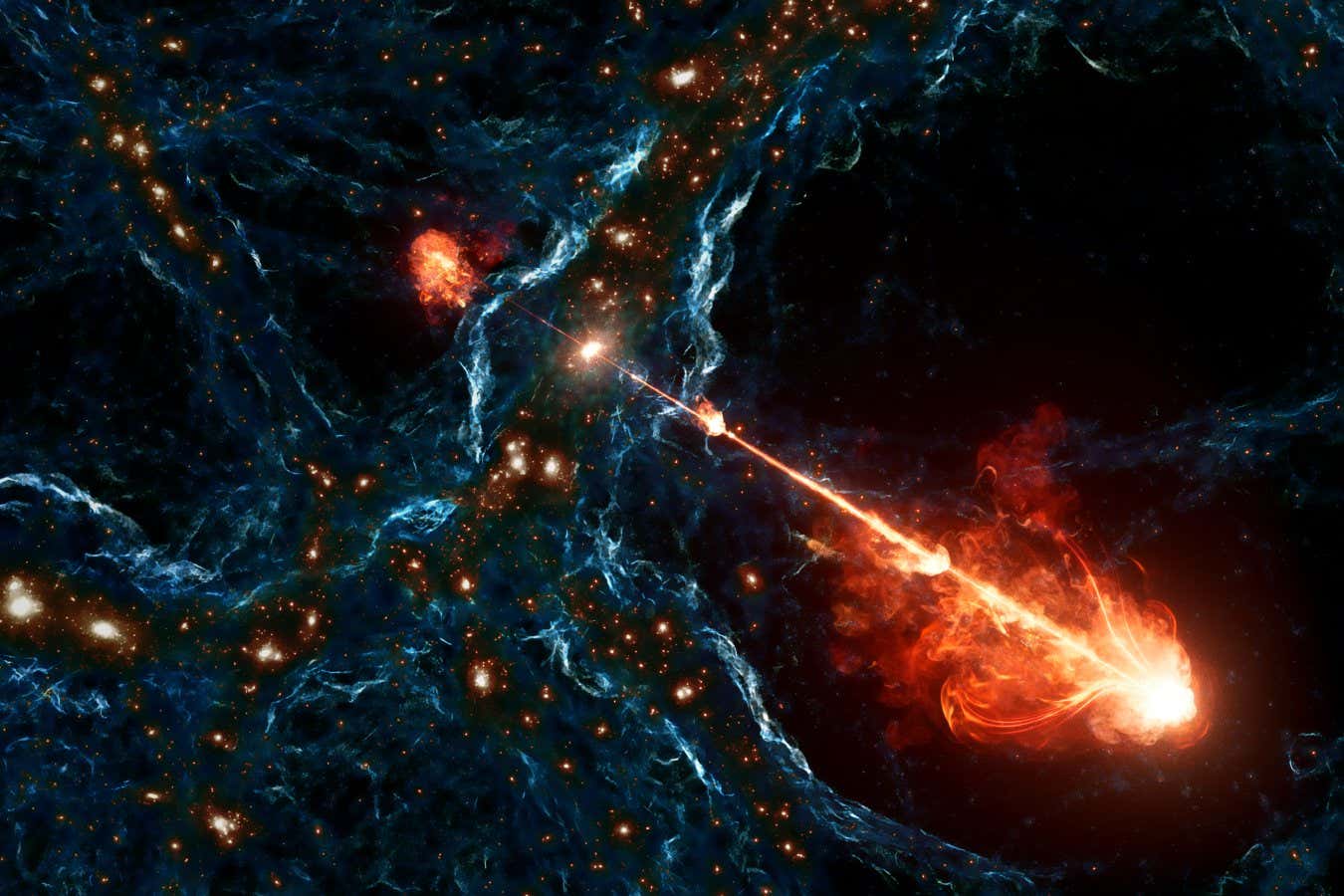Spanning 23 million light years, or 220 Milky Way galaxies, a set of giant, newly discovered black hole jets known as Porphyrion may change our understanding of black holes and the structure of the universe
By Alex Wilkins
18 September 2024
Illustration of the giant black hole jets known as Porphyrion
Caltech
A pair of jets blasting out of a black hole spans 23 million light years, the equivalent of 220 Milky Way galaxies in length. This is so large that it may change our understanding both of black holes and the structure of the universe.
“If you think of jets as a thing, then you could say this is the largest object that we know of in the universe,” says Martin Hardcastle at the University of Hertfordshire, UK.
Read more
Did time flow in two directions from the big bang, making two futures?
Advertisement
The jets, which Hardcastle and his colleagues have named Porphyrion, come from a black hole in a distant galaxy, some 7.5 billion light years from Earth. The light reaching us from them now started its journey when the universe was just 6.3 billion years old, only about half the age it is now.
The researchers identified the jets, as well as at least 10 other sets of jets that are also millions of light years across, using the Low Frequency Array (LOFAR) telescope, which consists of thousands of radio antennas across many European countries. Follow-up observations using telescopes in India and Hawaii then helped to locate the host galaxy.
To produce such vast jets, the black hole responsible would have needed to ingest about a sun’s worth of matter each year for a billion years, says Hardcastle. As matter falls into the black hole over this time frame, some of it will be twisted and accelerated by the black hole’s magnetic field, blasting it out into space to form the jets.
